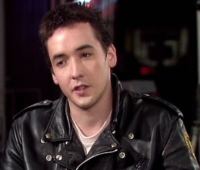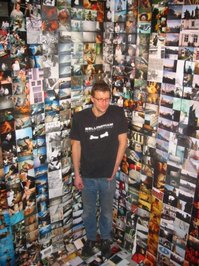Lloyd Dobler (John Cusack) in Say Anything, 1989:

I don’t want to sell anything, buy anything, or process anything as a career. I don’t want to sell anything bought or processed, or buy anything sold or processed, or process anything sold, bought, or processed, or repair anything sold, bought, or processed. You know, as a career, I don’t want to do that.
Robert Francis Zvernia as himself, from email sent, 2010:
I guess I’m what you’d call a new media artist. I work primarily in digital photography and video and have been distributing my work online since 1997. I’m no Luddite but I am concerned about the inclusion of cell phone art and the like as appropriate media for submission in the below call for public art proposals. Here’s why:
Public art by definition should be free and accessible to all. Cell phone art and the like violate this basic principle by requiring the purchase of equipment and/or services from commercial interests in order to access the nominally public work. While the incorporation of fee-attached technologies may be acceptable in private settings, any work which is publicly funded and located should be self-contained and present no financial barriers to its appreciation.
I hope you will keep this in mind as you fulfill your roles as stewards of the public trust.
Zverina takes issue with a call for proposals from Seattle’s Office of Arts & Cultural Affairs:
In collaboration with Seattle Parks and Recreation and the Seattle Department of Transportation (SDOT), Seattle’s Office of Arts & Cultural Affairs seeks an artist to create a new media artwork for the Cheshiahud Lake Union Loop.
The Cheshiahud Lake Union Loop is a pedestrian trail that surrounds Lake Union in Seattle. The selected artist will create a new media project drawing on the history and/or context of the site. Possible media include podcast- or cell-phone based audio work, audio and/or video tours using mobile media and GPS, and walking tours or interactive events using the Web.Eligibility: Open to professional artists living in Washington, Oregon, Idaho, Montana, British Columbia and California.
Budget: $18,000 all-inclusive
Deadline: 11 p.m., Tuesday, Jan. 12, 2010 (Pacific Time)
Details here.




He (or She) who controls definitions will control the world…
But public art, by definition, is NOT accessible to all.
Public art, by definition, is paid for by the public, and is sponsored by government agencies.
But there are lots and lots of historical precedents for public art that is accessible to a limited subset of the “public”.
Some of my favorites are the coded sculptures at CIA headquarters in Langley. Its public art, paid for by the public, and yet, without a security clearance, you will never see it.
http://www.wired.com/science/discoveries/magazine/17-05/ff_kryptos
Or, there is public art in airports- which, unless you buy a ticket and go thru security, you will never see.
Or, public art in the transit tunnel, again only visible to ticket buyers.
I once did a public art commission for the jailers lunchroom- only jailers, and mop wielding trustees in orange jumpsuits may enjoy it.
So, while Zvernia may be MORALLY correct, that cow done left the barn a long long time ago.
Ries:
Just because that cow left the barn a long time ago doesn’t mean we shouldn’t try to bring her on back into the fold. The current vogue for gadget-accessed public art casts the audience for the work as consumers. Despite their apparent ubiquity, cell phones are still essentially luxury items. While definitions are paradoxically flexible it seems like this is a good place to draw a line between what serves the broadest possible public and that which reflects a probably unconscious bias that sees the financial barriers to access as negligible.